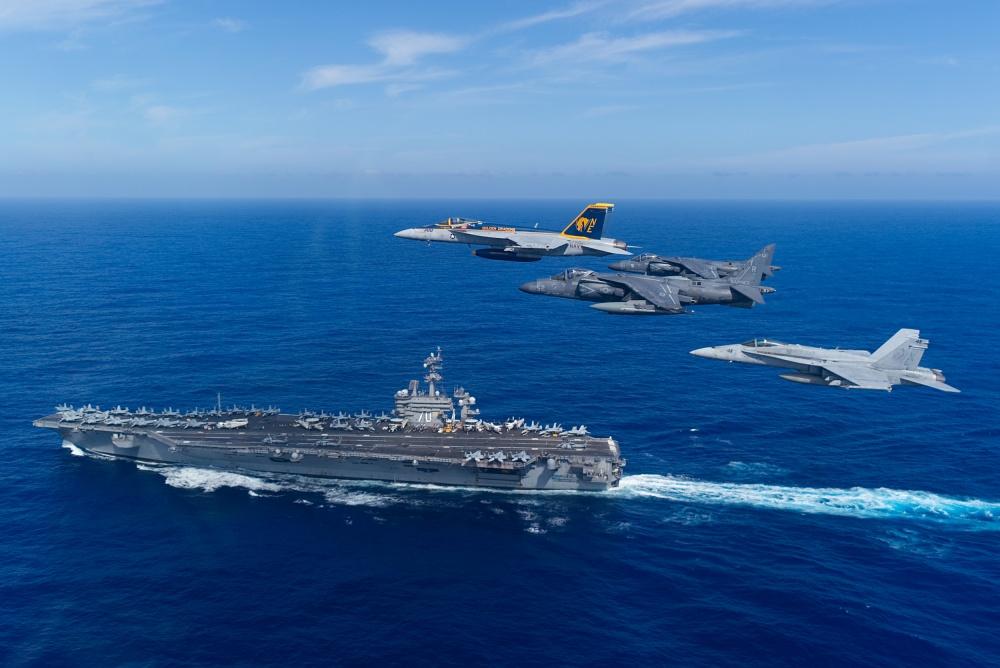
US defence secretary James Mattis recently made his first trip to Southeast Asia. Significantly, the visit took in Indonesia and Vietnam, both listed in Washington’s newly released national security strategy and national defence strategy as partners of growing significance. The trip not only marked the two nations’ greater role in the region, but also signalled that the US is putting increased weight on cooperation beyond the regional treaty allies, Thailand and the Philippines. Recognising that no relationship stays the same, but ‘they either get stronger or they get weaker’, Mattis confirmed that America wants a stronger relationship with a stronger Vietnam.
Hanoi has made active efforts from the early days of the US new administration to engage with it. Prime Minister Nguyen Xuan Phuc was the first Southeast Asian head of state—and the third from Asia (after Japanese prime minister Shinzo Abe and Chinese president Xi Jinping)—to meet with President Donald Trump in Washington. Several more ministerial level visits have taken place and Trump visited Vietnam in November last year.
The idea of a US aircraft carrier visit was floated during the visit to Washington of Vietnamese defence minister Ngo Xuan Lich in August. In Hanoi, Mattis met briefly with President Tran Dai Quang, visited the historic Vietnamese Tran Quoc pagoda, and discussed plans for the USS Carl Vinson to arrive in Da Nang in March 2018. It will be the first such visit since US forces left Vietnam at the end of the war in 1975. Just two days before Mattis’s arrival, the US committed to dioxin remediation at Bien Hoa Air Base as it continued to address war legacies.
While the carrier’s arrival will have considerable symbolism—given the 50th anniversary of the Tet Offensive—the controversy it may well bring arises not from history but from current power plays in the region.
So how is this being viewed by China? A Ministry of Foreign Affairs spokesperson was reported as saying that China had no objection to the Carl Vinson’s visit to Vietnam, but the Communist Party–run Global Times called the plan a ‘red line’ that neither the US nor Vietnam should cross. Beijing would see an aircraft carrier visit as meddling in South China Sea disputes that it wants external actors, such as the US, to stay away from. China’s dissatisfaction with the Washington–Hanoi rapprochement isn’t surprising, as these developments come amid the tension that followed the release of the US national defence strategy that explicitly named China as a ‘strategic rival’. Add to that the latest freedom of navigation operation (FONOP) by a US warship. On 17 January, the USS Hopper sailed near the Scarborough Shoal—the subject of an intense dispute between China and the Philippines after it was seized by China in 2012. China insists that the FONOP violated its sovereignty and says the patrols have forced it to strengthen its defence capabilities, including establishing military facilities on artificial islands. Vietnam has been actively and consistently upholding its own claims in the South China Sea. Mattis’s visit to Southeast Asian countries, and in particular his commitment to closer cooperation with Hanoi, agitated Beijing further.
Vietnam is a sovereign nation that’s entitled to pursue independent foreign and defence policies. But China has been cultivating a habit of signalling what it expects from its neighbours, and what it doesn’t want. Beijing regularly tells countries, such as Vietnam, that they’re overreacting, and the southern neighbour is by no means singled out. In the growing debate on China’s coercive diplomacy, it’s important to appreciate that its rhetoric—expressing displeasure, disappointment or hurt feelings—is an integral part of Beijing’s strategy. Such rhetoric is often applied before, or often instead of, coercive action. For China’s purposes, conveying its displeasure is often enough to alter the target nation’s behaviour.
To stand up to Beijing, Vietnam needs to be sure of strong and continuing US support. Hanoi has developed a pattern of tailored reaction and a relatively good sense of when to give in and when to counter-coerce. For example, in May 2014, when China deployed the HYSY-981 oil rig into waters Vietnam claims around the Paracel Islands, the Vietnamese launched a concentrated diplomatic and media campaign to counter Chinese coercion. It resulted, eventually, in China withdrawing the rig ahead of schedule. In July 2017, however, under Chinese pressure to stop gas exploration in cooperation with the Repsol company, Hanoi bowed to Beijing’s demand. Of course, the reaction in each situation will depend on the severity of the issue and other factors such as the likely gains from concessions or the costs of countering Beijing’s coercion. Vietnam views the American aircraft carrier visit as an opportunity worth standing up to China over, but some room for negotiation remains, perhaps regarding the timing of the visit, the length of the carrier’s stay and what Hanoi says about its significance while it’s there. To put its foot down, however, Hanoi needs Washington’s continual reassurance that Mattis’s tougher stance towards China isn’t temporary and that a US commitment to the South China Sea remains on Trump’s priority list.